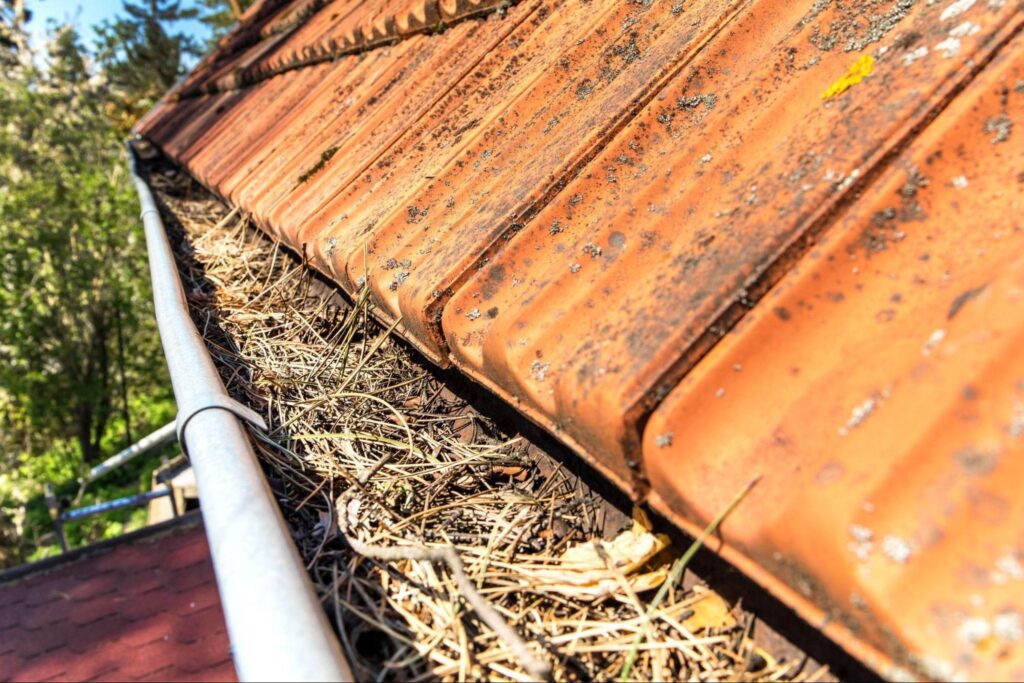Gutters might not be the first feature noticed on a house, yet their role in protecting a home cannot be overstated. A well-maintained gutter system is vital for safeguarding a property’s structure and value. Neglected gutters can lead to serious consequences, impacting overall property integrity and safety. Homeowners should be aware of common gutter problems to catch issues early and prevent expensive repairs. This guide aims to assist in identifying potential gutter troubles before they escalate, saving property owners time and money.
Contents
Table of Contents
ToggleClogged Gutters
Clogged gutters are an all-too-common issue in many households. The primary culprits include an accumulation of leaves, twigs, and various debris that find their way into the gutter channels. When gutters become blocked, they fail to efficiently channel water away from the roof and home foundation. Look for signs like overflowing water or sagging gutters, which can indicate a blockage.
Besides causing water damage to both the interior and exterior of the house, clogged gutters can also lead to foundation issues if water isn’t properly directed away from the home. Regular maintenance can prevent clogging. Homeowners should clear gutters at least twice a year, particularly in Autumn and Spring, or consider professional cleaning to ensure thoroughness.
Leaky Gutters
Leaky gutters generally arise from cracks, loose joints, or damage over time. Regular inspections are key to spotting leaks early, and these checks should be a routine part of home maintenance. Inspect for dripping water, especially after rainfall, to catch leaks before they worsen.
The impact of leaks can extend to the home’s foundation and landscape. Water seepage can erode soil and weaken foundations, which might lead to structural problems. For repairs, minor leaks can be sealed with waterproof sealants, but significant damage may require replacing sections of the gutter. Professional assistance is advisable when extensive replacements are necessary to ensure longevity and performance.
Sagging Gutters
Gutters can sag due to several factors, such as excessive weight from water, debris, or snow, and poor installation. Signs of sagging include visible dips along the gutter line and water pooling in certain sections. If left unaddressed, sagging gutters may eventually detach from the house, causing damage.

To counteract sagging, homeowners can install additional supports or brackets. However, when gutters have sagged substantially, it might be best to call in a professional. They can assess whether a full replacement or just strategic support installation is needed to keep the gutter system secure and functional.
Improperly Pitched Gutters
Gutter pitch refers to the slight angle necessary for water to flow smoothly towards the downspouts. An improper pitch results in water sitting stagnant, often noticeable if water remains in gutters long after rainfall has ceased. Proper drainage prevents water from backing up onto the roof, reducing the risk of structural damage to eaves and soffits.
Rectifying an incorrect pitch can involve precise adjustments to gutter brackets. While minor fixes may be suitable for a DIY approach, professional help ensures the pitch is set correctly without causing unintended damage. Consulting a specialist can prevent future complications and keep the gutter system efficient.
Rust and Corrosion
Rust and corrosion are common issues affecting metal gutters, especially in regions with frequent rain or salt air. Visual cues of rust include discoloration or flaking metal. Once corrosion begins, it can quickly reduce the gutter’s integrity and functionality.
Corroded gutters not only degrade the visual appeal of a home but can also lead to leaks and, ultimately, structural damage. In fact, rust-related gutter issues might also indicate broader roofing concerns. Homeowners should regularly inspect for other signs of roof issues that could compound the problem if left unchecked. To prevent rust, consider coatings or materials less susceptible to corrosion, like aluminum or vinyl. Regular checks and maintenance are vital, and when corrosion is extensive, replacing the gutters could be more cost-effective than patching them up.
Gutter Joint Separation
Joints are the joining sections of gutter lengths, and over time, these can separate due to weathering and poor initial installation. Separation is identifiable by visible gaps between gutter sections. Such a condition can severely impact water management, leading to leaks and inefficient water redirection.
Repairing these separations involves sealing or resealing gutter joints with the appropriate materials. Specialists can provide a long-term solution by using durable sealants that withstand varying weather conditions, ensuring continuous protection for the home.
Downspout Blockages
Downspout blockages often result from accumulated debris, which may include leaves, dirt, and occasionally, ice.

A sign of blockage is poor water drainage from the gutter system as water struggles to flow away from the roof. This not only affects the gutters’ effectiveness but can also lead to overflow and potential damage at the ground level.
While some blockages can be resolved with a simple garden hose or a plumber’s snake, heavily clogged downspouts might require professional cleaning. Additionally, installing leaf guards at the tops of downspouts can reduce the frequency of such obstructions.
Conclusion
Recognising and addressing gutter issues promptly is crucial in safeguarding the home. Regular maintenance and inspections can significantly prolong gutter lifespan and protect one’s investment. While some minor issues are manageable with DIY solutions, professional repairs are sometimes necessary to ensure comprehensive gutter health. Protecting a property involves caring for every component, and gutters are no exception. Proper care enables gutters to function optimally, ensuring a safe, dry, and preserved home environment.

